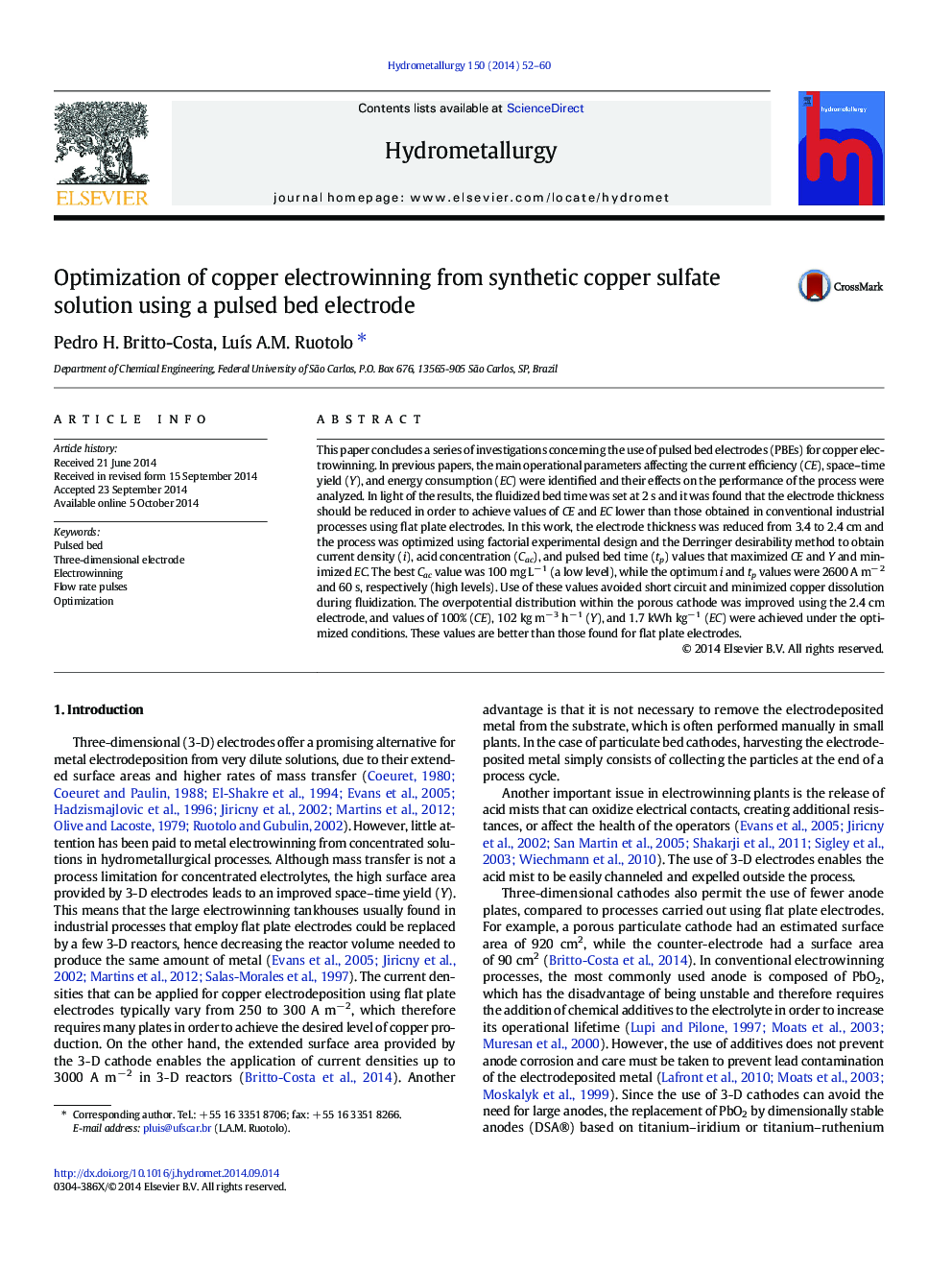| Article ID | Journal | Published Year | Pages | File Type |
|---|---|---|---|---|
| 212156 | Hydrometallurgy | 2014 | 9 Pages |
•Optimization of copper electrowinning using three-dimensional electrodes•Pulsed bed electrode (PBE) provides high surface area in a small volume reactor.•Innovative membraneless reactor and flow rate pulses setup are presented.•The current efficiency was maximized and high quality deposit was obtained.•Low energy consumption and high space–time yield can be achieved.
This paper concludes a series of investigations concerning the use of pulsed bed electrodes (PBEs) for copper electrowinning. In previous papers, the main operational parameters affecting the current efficiency (CE), space–time yield (Y), and energy consumption (EC) were identified and their effects on the performance of the process were analyzed. In light of the results, the fluidized bed time was set at 2 s and it was found that the electrode thickness should be reduced in order to achieve values of CE and EC lower than those obtained in conventional industrial processes using flat plate electrodes. In this work, the electrode thickness was reduced from 3.4 to 2.4 cm and the process was optimized using factorial experimental design and the Derringer desirability method to obtain current density (i), acid concentration (Cac), and pulsed bed time (tp) values that maximized CE and Y and minimized EC. The best Cac value was 100 mg L− 1 (a low level), while the optimum i and tp values were 2600 A m− 2 and 60 s, respectively (high levels). Use of these values avoided short circuit and minimized copper dissolution during fluidization. The overpotential distribution within the porous cathode was improved using the 2.4 cm electrode, and values of 100% (CE), 102 kg m− 3 h− 1 (Y), and 1.7 kWh kg− 1 (EC) were achieved under the optimized conditions. These values are better than those found for flat plate electrodes.
Graphical abstractFigure optionsDownload full-size imageDownload as PowerPoint slide
